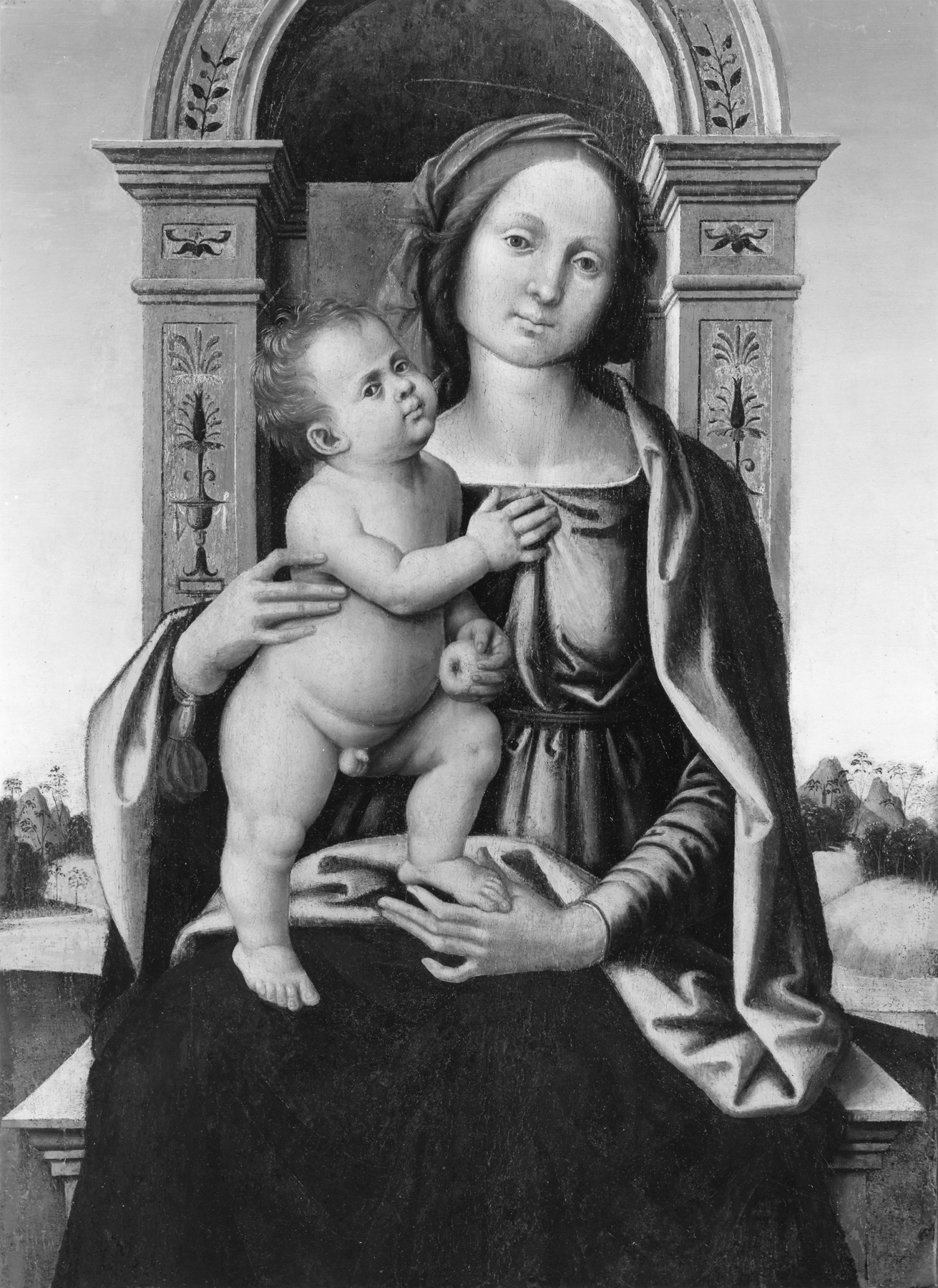Madonna and Child Enthroned
(Renaissance Europe )
The Madonna sits upon a marble throne comprising two columns surmounted by an arch. The throne is decorated with gold mosaics and elaborate floral motifs derived from the wall paintings in the Golden House of Nero in Rome. This ancient palace was excavated in the 1490s and subsequently became a major source of inspiration for artists. In his left hand the Christ Child holds a small apple, a reference to the forbidden fruit eaten by Adam and Eve. The painting's large size and damaged edges, which show evidence of having been cut, suggest it is a fragment from the center of an altarpiece. In its original state, it probably showed the Madonna and Child flanked by full-length standing saints.
Giovanni Battista Bertucci worked primarily in his native Faenza in northern Italy during the early 1500s. The Walters picture, with its solemn, dignified figures and tranquil landscape, reflects Bertucci’s familiarity with the work of Perugino, active in the neighboring regions of Tuscany and Umbria. For an earlier work by Bertucci, see 37.479. For a “Madonna and Child” by Perugino, see 37.475.
Provenance
Provenance (from the French provenir, 'to come from/forth') is the chronology of the ownership, custody, or location of a historical object. Learn more about provenance at the Walters.
Marquess Filippo Marignoli, Rome and Spoleto, until 1898 [mode of acquisition unknown]; Marquess Francesco Marignoli, 1898 [mode of acquisition unknown]; Don Marcello Massarenti Collection, Rome, 1899 [mode of acquisition unknown] [1900 catalogue supplement: no. 54]; Henry Walters, Baltimore, 1902, by purchase; Walters Art Museum, 1931, by bequest.
Geographies
Italy, Romagna, Faenza (Place of Origin)
Measurements
Painted surface H: 29 11/16 x W: 21 1/4 x D excluding cradle: 3/8 in. (75.4 x 54 x 1 cm)
Credit Line
Acquired by Henry Walters with the Massarenti Collection, 1902
Location in Museum
Not on view
Accession Number
In libraries, galleries, museums, and archives, an accession number is a unique identifier assigned to each object in the collection.
In libraries, galleries, museums, and archives, an accession number is a unique identifier assigned to each object in the collection.
37.994


